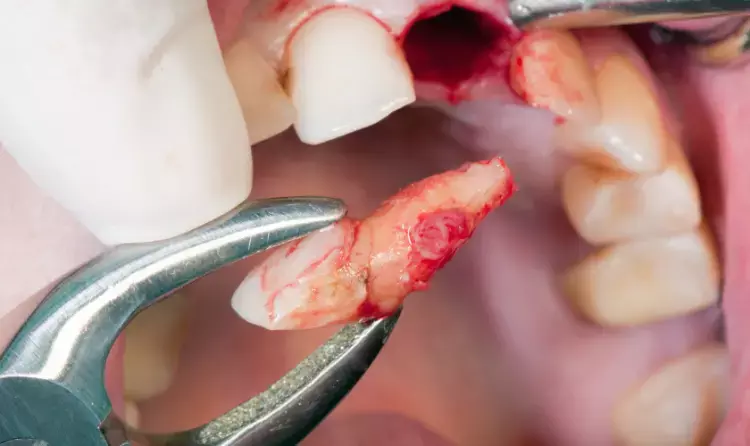- Home
- Medical news & Guidelines
- Anesthesiology
- Cardiology and CTVS
- Critical Care
- Dentistry
- Dermatology
- Diabetes and Endocrinology
- ENT
- Gastroenterology
- Medicine
- Nephrology
- Neurology
- Obstretics-Gynaecology
- Oncology
- Ophthalmology
- Orthopaedics
- Pediatrics-Neonatology
- Psychiatry
- Pulmonology
- Radiology
- Surgery
- Urology
- Laboratory Medicine
- Diet
- Nursing
- Paramedical
- Physiotherapy
- Health news
- Fact Check
- Bone Health Fact Check
- Brain Health Fact Check
- Cancer Related Fact Check
- Child Care Fact Check
- Dental and oral health fact check
- Diabetes and metabolic health fact check
- Diet and Nutrition Fact Check
- Eye and ENT Care Fact Check
- Fitness fact check
- Gut health fact check
- Heart health fact check
- Kidney health fact check
- Medical education fact check
- Men's health fact check
- Respiratory fact check
- Skin and hair care fact check
- Vaccine and Immunization fact check
- Women's health fact check
- AYUSH
- State News
- Andaman and Nicobar Islands
- Andhra Pradesh
- Arunachal Pradesh
- Assam
- Bihar
- Chandigarh
- Chattisgarh
- Dadra and Nagar Haveli
- Daman and Diu
- Delhi
- Goa
- Gujarat
- Haryana
- Himachal Pradesh
- Jammu & Kashmir
- Jharkhand
- Karnataka
- Kerala
- Ladakh
- Lakshadweep
- Madhya Pradesh
- Maharashtra
- Manipur
- Meghalaya
- Mizoram
- Nagaland
- Odisha
- Puducherry
- Punjab
- Rajasthan
- Sikkim
- Tamil Nadu
- Telangana
- Tripura
- Uttar Pradesh
- Uttrakhand
- West Bengal
- Medical Education
- Industry
Clonidine Safer than Epinephrine for Intraoral Anesthesia in Diabetic Patients, suggests study

A recent clinical trial published in The Journal of Evidence-Based Dental Practice revealed the efficacy, cardiovascular safety, and side effects of different anesthetic solutions for maxillary infiltration anesthesia in patients with and without type 2 diabetes mellitus (DMT2). The study compared the use of 2% lidocaine with clonidine (15 mcg/ml) and 2% lidocaine with epinephrine (1:100,000), which found significant differences in onset, duration, anesthetic spread, and postoperative effects.
The study included 63 patients with type 2 diabetes mellitus (DMT2) and 52 non-diabetic participants which showed clear differences in anesthetic response based on diabetes status. One of the key findings of this study was the shorter onset time for anesthesia in diabetic patients when compared to their non-diabetic counterparts, regardless of the anesthetic solution used.
Diabetic patients experienced a 59% longer anesthesia duration with lidocaine and epinephrine (LE) and a 28% longer duration with lidocaine and clonidine (LC) compared to non-diabetics. Anesthesia with LE lasted 37.9% longer than with LC (182 minutes versus 139 minutes) when compared the two solutions within diabetic patients. Also, the width of the anesthetic field was markedly wider in diabetics, with LE providing a broader coverage (35.19 mm) compared to LC (27.07 mm).
Blood pressure and heart rate measurements further highlighted the differences between the solutions. Diabetic and non-diabetic patients who were receiving lidocaine with clonidine showed a significant drop in systolic blood pressure (SBP) from the 15th to the 30th minute after administration. Also, lidocaine with epinephrine led to an increase in heart rate in both diabetic and non-diabetic groups during the same timeframe.
Another important discovery was the increased prevalence of postoperative paresthesia in diabetic patients treated with LE when compared to LC. No such cases were observed in non-diabetic patients. Clonidine was found to be a safer alternative to epinephrine in reducing the cardiovascular risks and local side effects without compromising anesthetic effectiveness.
Overall, these findings emphasize the importance of tailoring anesthetic strategies for diabetic patients who were undergoing dental procedures. The favorable safety profile and effective anesthetic properties of clonidine make it a promising option for diabetic patients who may otherwise face increased risks with epinephrine-based solutions.
Source:
Milic, M. S., Brkovic, B., Vucetic, M., Todorovic, V., & Stojic, D. (2025). Efficacy and safety of lidocaine with clonidine for maxillary infiltration anesthesia in patients with diabetes mellitus type 2: double-blind, randomized clinical trial. The Journal of Evidence-Based Dental Practice, 102097. https://doi.org/10.1016/j.jebdp.2025.102097
Neuroscience Masters graduate
Jacinthlyn Sylvia, a Neuroscience Master's graduate from Chennai has worked extensively in deciphering the neurobiology of cognition and motor control in aging. She also has spread-out exposure to Neurosurgery from her Bachelor’s. She is currently involved in active Neuro-Oncology research. She is an upcoming neuroscientist with a fiery passion for writing. Her news cover at Medical Dialogues feature recent discoveries and updates from the healthcare and biomedical research fields. She can be reached at editorial@medicaldialogues.in
Dr Kamal Kant Kohli-MBBS, DTCD- a chest specialist with more than 30 years of practice and a flair for writing clinical articles, Dr Kamal Kant Kohli joined Medical Dialogues as a Chief Editor of Medical News. Besides writing articles, as an editor, he proofreads and verifies all the medical content published on Medical Dialogues including those coming from journals, studies,medical conferences,guidelines etc. Email: drkohli@medicaldialogues.in. Contact no. 011-43720751


